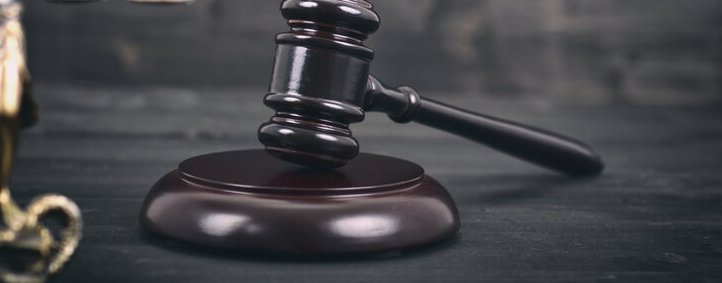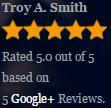On December 18, 2018, a Bronx jury returned a verdict of NOT GUILTY fully acquitting my client, JAKWON RAMOS, of charges of Murder in the Second Degree, Manslaughter in the First Degree and Criminal Possession of a Weapon in the Second Degree.
Mr. Ramos was arrested on October 5, 2015, for the shooting death of Seecharan Ahmad on September 30, 2015, at the vicinity of 1529 Glover Street, Bronx, NY.
Sowing the seeds for the acquittal began weeks ago before the trial at the suppression hearing of the client’s alleged confession. An NYPD Detective testified that the precinct had two interrogation rooms, one that had video recording equipment and one that did not. According to the Detective, he spoke to Mr. Ramos in the non-video interrogation room to only ascertain his pedigree information such as address and date of birth. The Detective testified that it was his intent to bring Ramos into the video interrogation room where his Miranda warnings would be read before any questioning about the homicide. The Detective testified that as he was taking this pedigree information that Mr. Ramos made a “spontaneous” statement in sum and substance: Ramos and the deceased were into a financial scheme involving credit cards; that the deceased and Ramos met up and that an argument ensued at which time Ramos observed the deceased reach for what he believed to be a gun so Ramos shot the deceased (in the back) apparently in self- defense. The Detective further testified that Ramos spoke for 20 minutes but that the Detective did not ask any questions. Following this, the Detective testified that he placed Ramos in the video interrogation room at which time his Miranda warnings were read and Ramos requested a lawyer on camera.
From a legal perspective, prior to questioning an individual in custody about a crime, the police must advise a suspect of his/ her rights to remain silent and to have an attorney (commonly known as Miranda warnings). However, a suspect that makes a spontaneous statement to police that was not in response to any police questioning does not require the need for Miranda warnings. The Court concluded that Mr. Ramos statement was not truly spontaneous and that the Police were required to advise him of his rights before speaking with him. Accordingly, the Court suppressed the statement but ruled that the statement could be used for impeachment purposes should Mr. Ramos testify at trial which is exactly what occurred.
On its face, there appeared to be overwhelming evidence of Mr. Ramos’s guilt. The NYPD recovered the deceased cell phone which he possessed at the time of his death which established that he had texted multiple times with Mr. Ramos and had agreed to meet at the crime scene to engage in a debit card fraud scheme. Cell site/cell tower evidence placed Mr. Ramos’ phone at the scene of the homicide. From Mr. Ramos’ cell information the police were able to determine the address of Mr. Ramos. The police obtained surveillance video from Mr. Ramos’s building which also contained audio recordings in the elevator of Mr. Ramos’ building minutes after the homicide in which Mr. Ramos is observed talking on his cell phone and stating that the victim was dead; that he had thrown away the clothing he was wearing as his “prints” were all over it; and that he had to get out of here. Further, Mr. Ramos is observed leaving his building with his TV and personal belongings giving the appearance that he was fleeing. Upon a search of the area, the police recovered the clothing that Mr. Ramos had thrown in the garbage. The DNA analysis revealed that Mr. Ramos’ DNA was on the clothing. Additionally, the police seized Mr. Ramos’ cell phone at the time of his arrest. A search of the cell phone revealed that Mr. Ramos had texted his sister in New Jersey in the moments before the homicide to delete all of her text messages between the two and that she should follow him on Facebook in that he was going to create a false alibi to make it appear that he was in New Jersey at the time of the murder. Further, Mr. Ramos updated his Facebook status on social media that he was in New Jersey with his sister in the minutes after the homicide when he was really in the Bronx as established by the cell tower evidence.
Given the overwhelming amount of evidence that the prosecution presented, it was quite clear that Mr. Ramos would need to testify in his own defense which he did quite well. Mr. Ramos testified that he was a member of the Bloods gang; that he met the deceased when he was locked up for two weeks on Rikers Island; that the deceased was a fellow Blood gang member and that the deceased told Ramos about a debit bank card scam that he was involved in; the deceased told Ramos that he would contact him when he was released from jail. Further, Ramos testified that the deceased contacted him on Facebook in the summer of 2015 which was confirmed by the Facebook records. Ramos indicated that in August 2015, he gave the deceased a debit card in exchange for money. On September 30, 2015, the defendant testified that he had agreed to meet up with the deceased to engage in this scheme. Ramos testified that it was his plan to have the deceased show him how he actually would commit the debit card scheme. Because Ramos would be committing a financial crime in the Bronx, Ramos felt it prudent to create a false alibi in New Jersey which is why he told his sister this. Ramos further explained that his only intent was to engage in the debit card scheme and that he had no intent to shoot the deceased.
Ramos informed the deceased by text message that he had a Wells Fargo card to give to him. This, however, was not true in that according to Ramos the card was in the possession of Ramos’ neighborhood friend, Jeroud Gregory. Ramos had asked for Gregory to give him the card in exchange for money but Gregory declined according to Ramos. Instead, Gregory informed Ramos that he wanted to go along with Ramos to meet the deceased to learn how to commit the debit card scheme. Ramos agreed and the video surveillance established that Gregory walked with Ramos to the scene of the homicide. Ramos testified that the deceased was angry that Ramos had brought an unknown person, Gregory, and that a physical fight ensued between the deceased and Ramos. Ramos testified that he observes the deceased pull out what appeared to be a black metal object which he believed to be a gun as Ramos was aware that the deceased was in prison for attempted murder. Ramos then indicated he heard a gunshot and observed Gregory holding a firearm at which time Ramos fled the scene. Video surveillance shows Ramos and Gregory leaving the scene.
Ramos testified that he threw away his clothing because even though he did not commit the murder he was present at the time of the homicide and he was concerned about the police. Ramos did in fact post on social media that he was in New Jersey to create a false alibi with the police and he also was concerned that other members of the Bloods would retaliate if they learned that Ramos was present.
On cross-examination, the prosecutor was allowed to question Ramos about the verbal statement he allegedly made to the Detective that he shot the deceased and threw the gun away. Ramos denied making any such statement and was adamant that he did not shoot the deceased. On rebuttal, the prosecution recalled the Police Detective regarding the circumstances of the alleged confession. This likely sealed the deal on the acquittal as the jury found it beyond belief that Ramos would make a “spontaneous” admission of guilt while he was in the interrogation room that did not have video recording equipment but when Ramos was read his rights on camera, he immediately requested counsel. Further, the Detective testified that he had brought Gregory in for questioning and that he determined that Gregory was present for the shooting but he was not responsible. When I questioned the Detective as to how he could make that finding the Detective testified it was based on the other evidence and Gregory’s self- serving denial of guilt. This showed the complete lack of a thorough investigation by the police.
The jury deliberated for approximately three hours before returning a verdict of NOT GUILTY!!!












